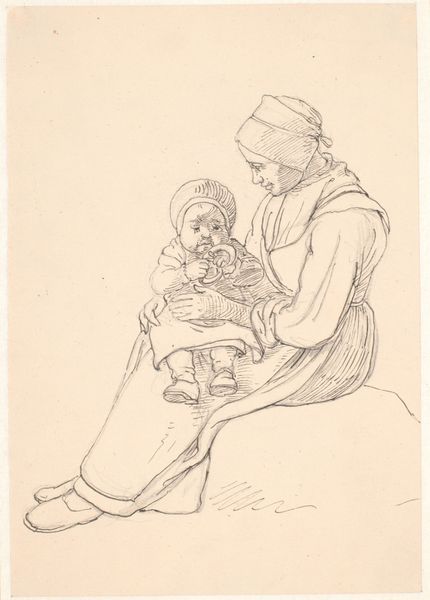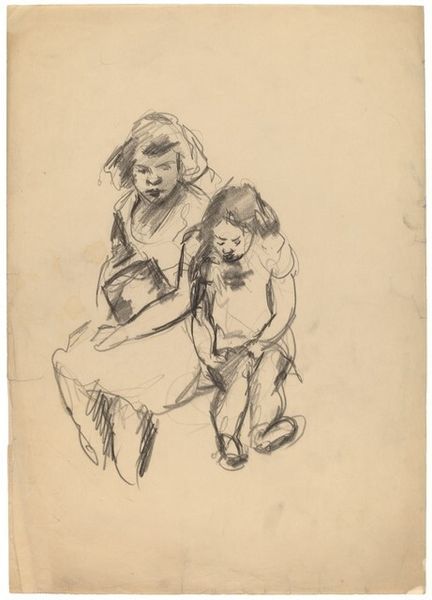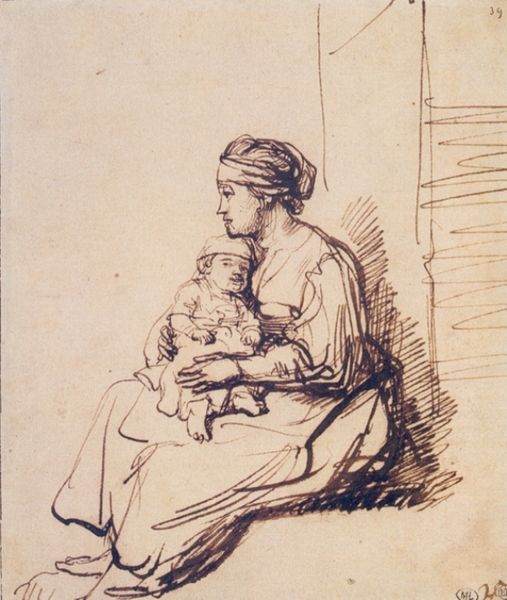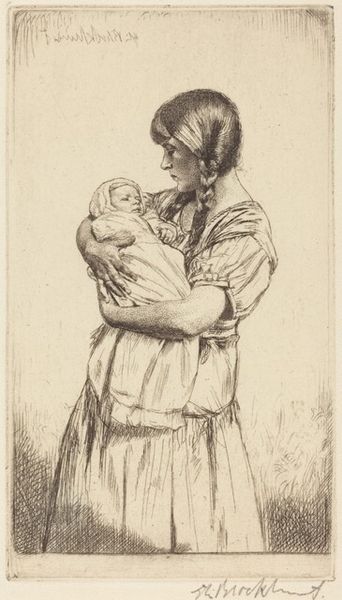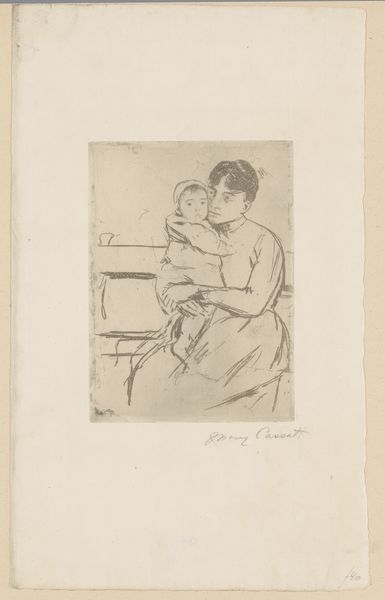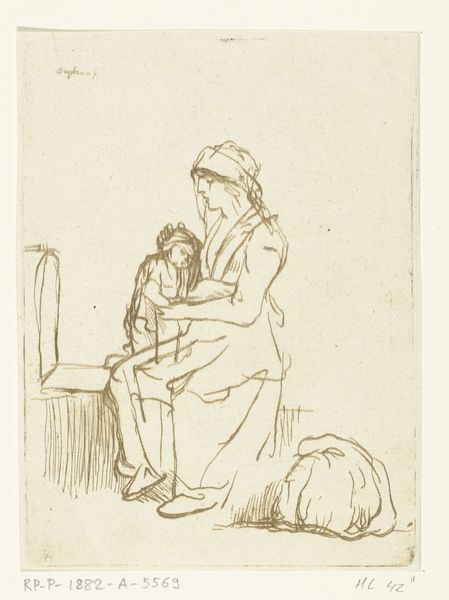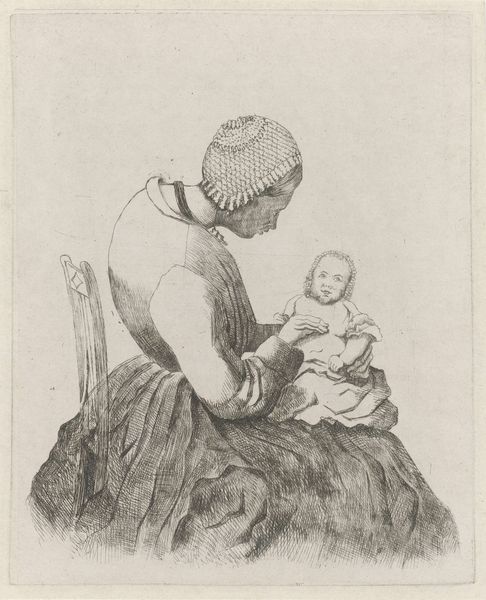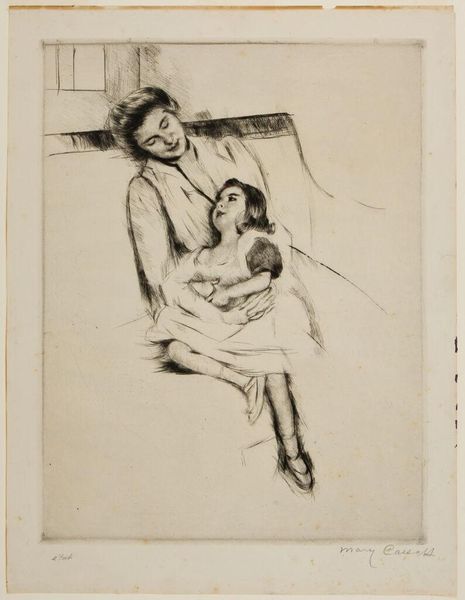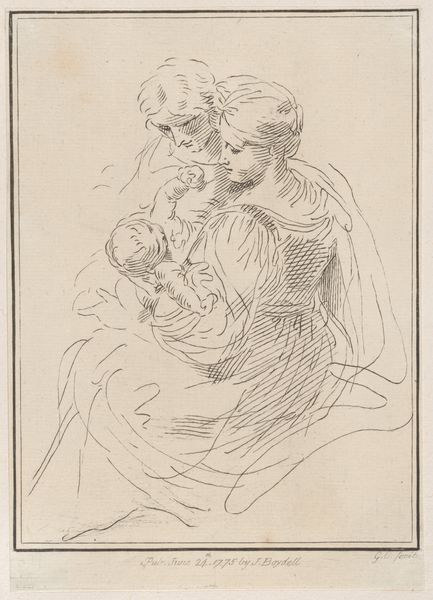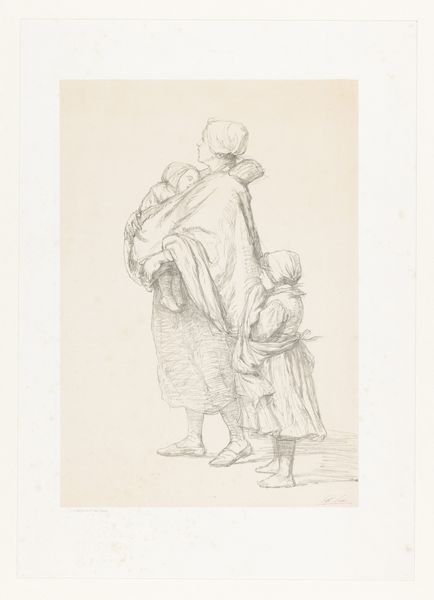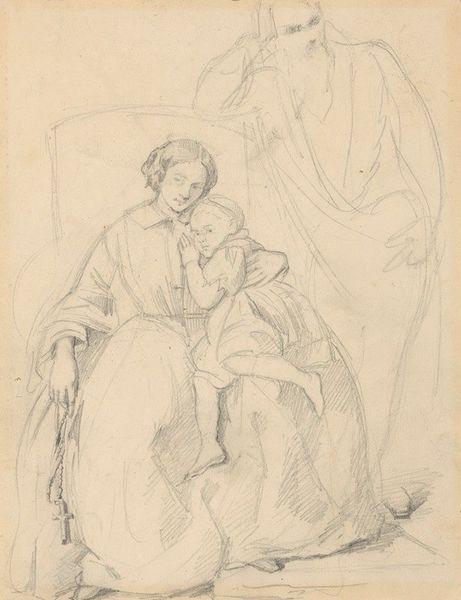
drawing, pencil
#
portrait
#
drawing
#
ink drawing
#
figuration
#
pencil
Copyright: National Gallery of Art: CC0 1.0
Editor: So, this is Mark Rothko’s “Seated Woman Holding a Child in Her Lap," a drawing in pencil and ink. I’m immediately drawn to the tenderness in the way the woman cradles the child, yet something about the sketch-like quality feels…unfinished, even unsettling. What do you see in this piece? Curator: Indeed, the raw, almost hesitant lines speak volumes. It’s fascinating how Rothko, who would later become famous for his monumental abstract color fields, begins here with such an intimate, figurative scene. The seated woman, a universal archetype of motherhood, immediately conjures the Madonna and Child. Notice how the absence of distinct facial features amplifies this feeling of universality; it is not a portrait of *a* mother but *motherhood* itself. Editor: That’s a fascinating point about the Madonna. Are you saying that Rothko consciously imbued this piece with religious symbolism? Curator: Perhaps. The imagery may not be intentional, but echoes of cultural memory often seep into even the most modern works. The position of the child, nestled protectively in the woman's lap, visually corresponds with a long Western tradition that emphasizes comfort, shelter, and unconditional care. This mirrors countless renditions of mother and child. Editor: It’s incredible how a simple sketch can hold so much weight, how even unfinished lines contribute to these complex meanings. I'll look at other pieces with those associations in mind. Curator: Visual symbols speak a common language and can endure across different cultures, with slight shifts in the usage of meaning. Looking at an artist’s body of work, particularly as an early figurative attempt, can uncover fascinating perspectives and influences in its style.
Comments
No comments
Be the first to comment and join the conversation on the ultimate creative platform.


